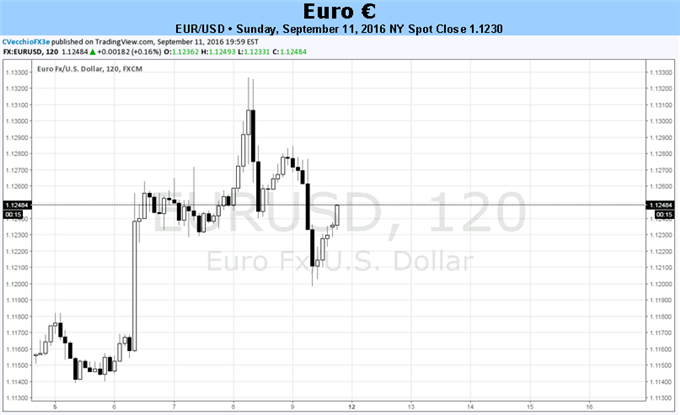
Fundamental Forecast for Euro: Neutral
– EUR/USD has been lifted by weakness on the USD side, not strength on the EUR side.
– ECB President Draghi made clear
– Volatility in FX markets is due to rebound over the coming weeks – it’s a good time to review risk management principles.
In a week when global equity markets were hit hard after weeks of low volatility and stability, it’s of little surprise that the Euro emerged as a top performer; after all, it is a low yielding funding currency, a safe haven, if you will, during times of market stress/demand for liquidity. The performances by the other major currencies offer support to this view. The Japanese Yen, the prototypical safe haven, was the top performer overall, while two of the commodity currencies, the Australian and Canadian Dollars, were the two laggards.
On the surface, then, given the Euro’s docile performance, it may seem safe to assume that Thursday’s European Central Bank rate decision and press conference came and went without any meaningful developments – that is hardly the case. To be clear, it very much seems that ECB President Mario Draghi used his press conference to start to pave the runway for more easing by the end of 2016; a reading of the ECB’s tea leaves reveals as much.
While we may have jumped the gun in our anticipation of the ECB tweaking its QE program back in July (one meeting early), ECB President Draghi made clear that our exact concerns are now being addressed by the ECB. What were they? A refresher on the ECB’s “capital key” is necessary. What is the capital key? The capital of the ECB comes from the national central banks (NCBs) of all EU member states. According to the ECB, the NCB’s shares in this capital are calculated using a key which reflects the respective country’s share in the total population and gross domestic product of the EU.











Leave A Comment